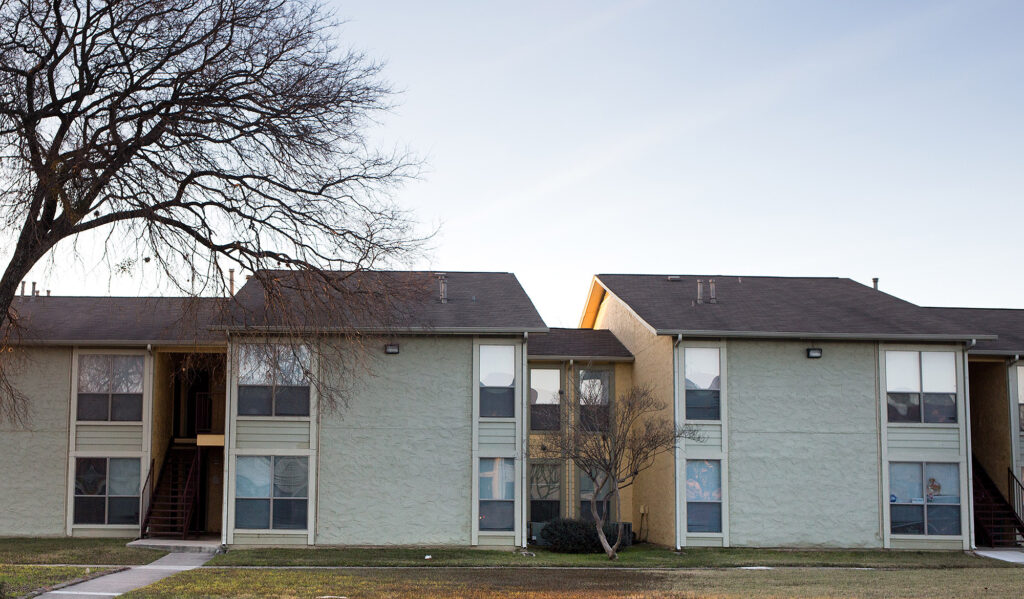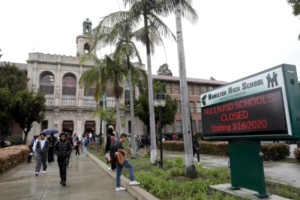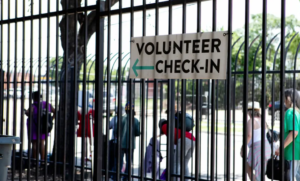Will an Obama-era policy move more low-income renters north?

Whitefield Place apartments in South East San Antonio, Texas, on Jan. 3, 2018.
In 1996, when then-U.S. Department of Housing and Urban Development Secretary Henry Cisneros defended the Housing Choice Voucher program, known colloquially as Section 8, in front of the House Committee on Appropriations, he emphasized how “the ability of families to locate nearer to job and educational opportunities could be the key ingredient in the move towards self-sufficiency.”
But Section 8 has not always helped families move closer to opportunities. In its August 2017 Interim Report, HUD noted, “In practice . . . HCV [Section 8] holders are frequently concentrated in high-poverty neighborhoods with limited access to the amenities associated with resident opportunity.”
Starting this week, a tweak in Section 8 policy
gives voucher holders more money to rent in “high-opportunity” communities while decreasing the amount of money they receive for renting in “low-opportunity” areas.
The intent, according to HUD, is to encourage more Section 8 recipients to find homes in wealthier and more stable neighborhoods, and at the same time give landlords in well-to-do communities more incentive to accept these types of tenants.
The policy, dubbed “Small Area Fair Market Rents” or “SAFMR,” went into effect Monday and impacts Section 8 voucher holders in 23 new metro areas, including San Antonio.
Last August, current HUD Secretary Ben Carson sought to suspend the policy, claiming that HUD needed more time to understand the impact of the Obama-era tweak. But on Dec. 23, in an affront to Carson’s move, a federal court ruled that SAFMR could proceed.
Just today, the Trump administration suspended another Obama fair-housing rule: one that requires cities to analyze their own housing segregation, and submit plans to tackle it.
In 2011, in Dallas, the SAFMR policy was first introduced and promising results there led to a desire to bring the policy nationwide.
The expansion of SAFMR was first proposed in 2016 by then-HUD Secretary Julián Castro. In short, the policy is designed to place voucher holders in more affluent communities by changing the geography used to calculate the Fair Market Rent (FMR) — the cost of rent up to which a voucher can be used in a given area — from an entire metropolitan area (in this case, the greater San Antonio-New Braunfels area) to individual ZIPcode by individual ZIP code.
In the San Antonio-New Braunfels metro area, the FMR for a two-bedroom in 2017 was $964. That number will now be determined by each ZIP code; so in Stone Oak, or 78258, for example, the FMR will be $1,390 for a two-bedroom in 2018.
When announcing that SAFMR would go nationwide, Castro said the policy change would “offer more choice and greater opportunity for families struggling to find a decent place to call home.”
What will that mean for San Antonio, a city with 14,000 Section 8 voucher holders and a 4-7 year-long waiting list?
HUD has its own metric for housing quality, known as the Housing Opportunity Index (HOI), that ostenbily points voucher holders to the best possible communities for living and raising their children. But voucher holders in San Antonio do not tend to live in those high-opportunity neighborhoods, which are concentrated in the city’s northern areas.
Voucher holders are found throughout the city, but concentrations tend to remain high inside Loop 410 — if they go beyond the loop, it’s down south. On the outer reaches of the Northside, where development has been focused, there are significantly smaller percentages of renters utilizing Section 8 vouchers, according to SAHA data.
One big reason low-income families cannot use vouchers to move to high-opportunity neighborhoods: those neighborhoods restrict vouchers.
Since its conception in 1974, the Section 8 program has put as its mission helping low-income families afford decent and safe housing on the private market. But discrimination has long plagued the program. SB 267, a 2015 Texas bill, ensured landlords in Texas that they would not be required to accept any government subsidies, including Section 8 vouchers. Texas is the only state in the country with such a law — which prevents municipalities from ensuring low-income renters that they won’t be discriminated against based on their source of income.
In San Antonio, 52 percent of the city’s landlords do not accept Section 8 voucher holders, according to an unpublished UTSA survey of more than 800 local landlords
That is where SAFMR is intended to pick up the slack.
The tweak, according to SAHA spokesperson Marivel Resendiz, will “allow our current clients the ability to locate a unit in higher opportunities areas in San Antonio.”
SAFMR will therefore seek to reinforce Section 8’s original mission. As noted by Stanford economist Raj Chetty: When it comes to intergenerational mobility and creating opportunity, neighborhoods matter.
In large metro areas with high levels of segregation and sprawl — and San Antonio is an often cited case on both accounts — areas with better prospects of upward mobility are much more expensive. So, to afford rent in those areas, voucher holders need a little more help. Will SAFMR be enough to deconcentrate Section 8 voucher holders in San Antonio?
To get a sense of what may occur in San Antonio, it might help to look at Dallas. After a civil lawsuit in 2010, Dallas served as a pilot for SAFMR. The results included a rise in voucher families moving to neighborhoods with lower poverty rates and less violent-crime.
Similar success in San Antonio is possible, but not guaranteed. According to SAHA, if the new policy increases their Housing Assistance Payment costs, then SAHA will have to reduce the number of families it can serve.
Furthermore, although the change in policy will arm voucher holders with additional funding if they seek to move to higher opportunity ZIP codes, that does not guarantee landlords will accept them. With SB 267 protecting a landlord’s right to reject voucher holders, the power remains in their hands.
The Article was originally published on Will an Obama-era policy move more low-income renters north?







